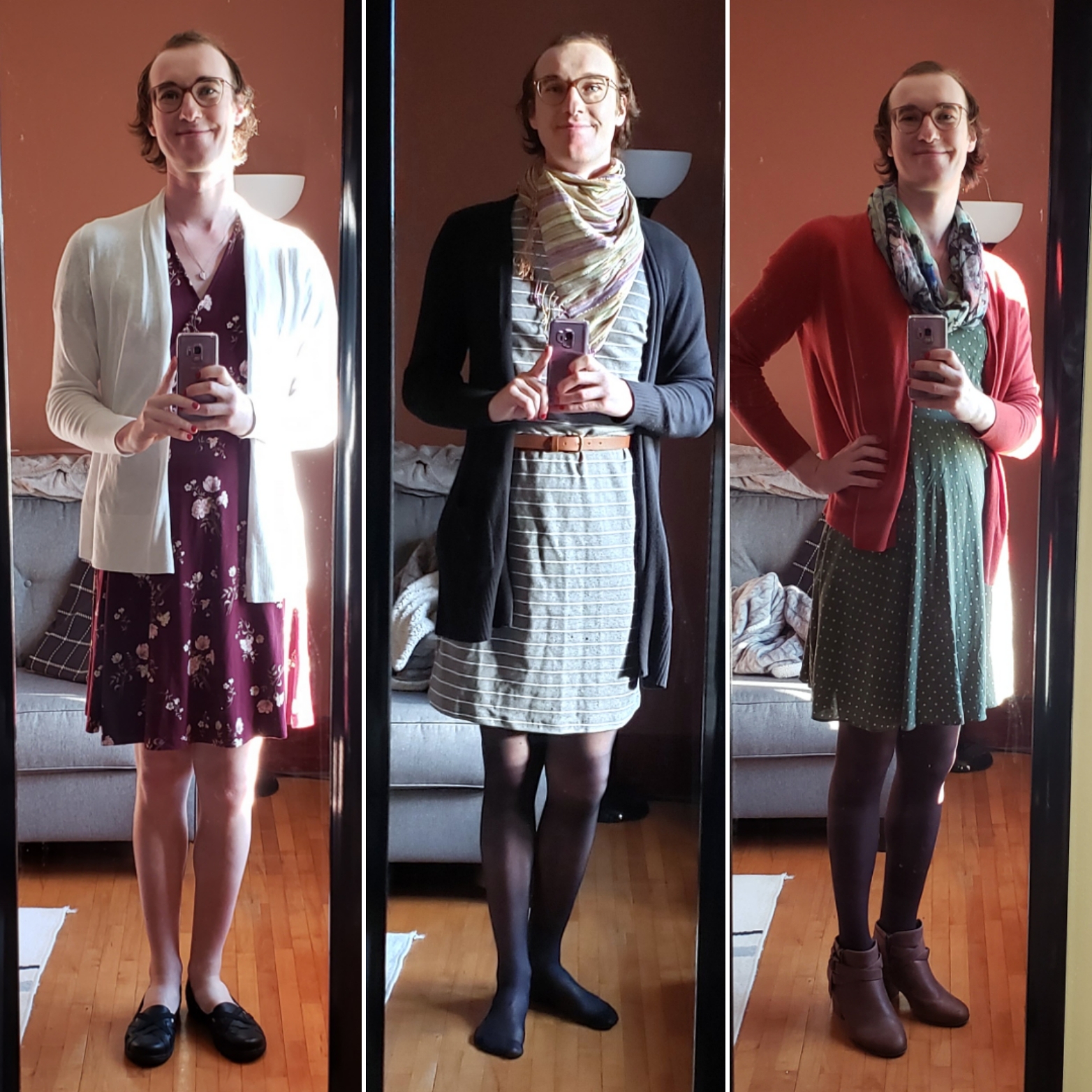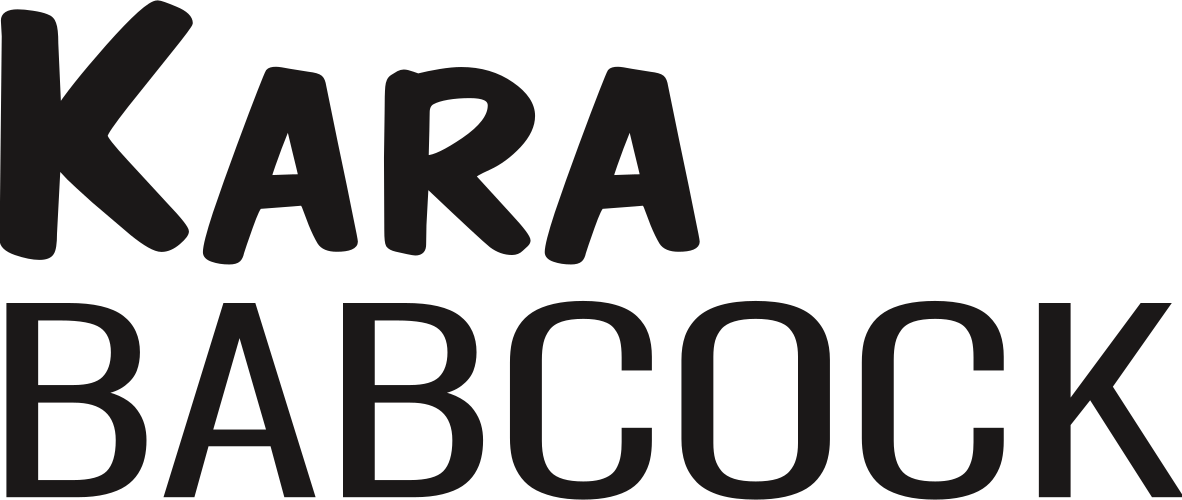When I look in the mirror
For the last 6 years of my career, I have worn the same outfit to work every day. I’m not exaggerating: I had 5 pairs of trousers, each a different colour; along with 3 styles of pullover sweaters in a few colours. And I hated this outfit, to the point where I—somewhat ironically, in hindsight—referred to it as my teacher drag. The moment I came home from work, I would change out of it in favour of a T-shirt and shorts (or, if indeed it was too cold even for me, sweat pants).
Last Wednesday I returned to work in our building since we shut down at March Break, and for the first time (not counting working from home), I wore a dress. I wore another one on Thursday, and another on Friday.

I loved it. I love it. I’m so happy. But to understand why, you need to understand that this is not really about clothing.
In my previous post, I discussed how gender dysphoria began to manifest for me in my mid-to-late twenties. In general, however, I prefer to talk about my feelings of gender incongruence, because I believe this is a more useful and accurate term for me. Dysphoria is a particularly insidious manifestation of incongruence, but while I wouldn’t say I have always felt dysphoria (at least not strongly), my history of incongruence is far stronger. And that is probably most evident in my fashion choices.
I used to tie my disinterest in male fashion to my asexuality. If I didn’t care about looking good for people, then all I really had to do was look presentable (I didn’t want to be shabby!) and that was good enough. I could channel my energy into “more important” things like reading books and Having Opinions on the Internet. Now, I realize of course that subconsciously I didn’t care because I couldn’t care because deep down I knew that these clothes were not for me. I was quite literally performing drag every day, even if I didn’t know it at the time.
When I came out to myself, as I alluded to in my coming out post, I already had quite the inkling of what my style would be—summed up succinctly as “tights and dresses,” or more metaphorically, as “Amy Pond meets Zoe Deschanel meets Lara Jean.” I knew what I wanted to wear, what would be comfortable for me, and it was just a matter of trying various fits, colours, patterns, etc., to figure out what exactly worked for me.
But I need to clarify, because this is something cis people often get wrong: I am not a woman because I want to wear tights and dresses. I’m a woman because I am a woman. It really is that simple. I’d like to say the outside is immaterial, but of course what’s on the outside is quite literally material—and to be less literal, it’s relevant because it mediates how people see and interact with me. I could have continued to dress exactly as I had dressed before coming out, and it wouldn’t make me any less of a woman—all you butch trans women out there, you rock and you are valid! But no. Wearing tights and dresses doesn’t make me a woman; rather, acknowledging to myself the truth of my gender means I have given myself permission to embrace the style I know is right for me.
As those of you following my transition Instagram know, I have been delighting in experimenting with that style for the past 8 months. As I mentioned in my previous post, I suddenly find myself so much more comfortable with photos. But I don’t think I was clear enough about how comfortable I feel in general.
It’s not just about being seen as a woman by others. At work, I’m mostly in my classroom alone all day—mingling is not exactly encouraged right now—so more people see me in a dress when I go for groceries every week! It’s really not about how others see me but rather how I see myself and, even more so, how I feel. I have never felt as comfortable, physically or mentally, as I do now when I’m wearing tights and a dress that make me feel cute.
In the before times (as I am wont to call them now), I would clad myself in my teacher drag and drag myself into work, excited (most days) to teach but never quite comfortable in my skin—or rather, in what covered it. Now, even though the present pandemic makes teaching more challenging and sometimes less exciting (to be totally honest), I always have something to look forward to in my outfits. Now I fall asleep joyously imagining the next day’s outfit in my head, anticipating the coordination of colours and style and accessories.
I love shopping. I love shoes now, of all things to suddenly have opinions on! I love these things not because they are things that women stereotypically love but because finally I am able to embrace them in the way that makes me comfortable. After all, it is, of course, entirely possible for men to be fashionable and to love shopping for masculine attire—and I imagine that, as with my euphoria for dresses, a trans man would experience a moment of bliss trying on his first tailored suit. Clothing should not be gendered—but because our styles are influenced by how we are socialized, our feelings about clothing are inextricably wrapped up in our gender identities. So if, like me, you’ve experienced this incongruence between the gender you were assigned and the gender you actually are, suddenly embracing a style that you have denied yourself as a result of that incongruence is … well, it’s freedom. And it’s euphoric.
I hope that euphoria comes across in my photos, but until I sit you down and explain, carefully and clearly, how it feels, you will not know the depths of my joy, the many layers and colours of elation that have now settled around me like a warm mantle in this chilly premature autumn we appear to be facing. Expression, for trans people, is something so fraught with the potential to go awry—to trigger rather than diminish dysphoria, to result in opprobrium rather than approval from ourselves or others. So when it goes right, when it feels right, like it has and continues to feel for me, that’s huge.
When I look in the mirror on my way out the door to work each day, I finally see me. I now feel cute, confident, and powerful. If you thought I was something good before, just wait—you ain’t seen nothing yet.

